#im sure itll be fine^_^
Note
eebie i sent someone fanart of them as a fetus and they won’t respond please what do i do
you Finish the job. draw them giving birth to it

#JOKE!!! DONT DO THAT#idk man . idk whay u drew The fetus in the first lplace But i think just wait and see#they mightve not seen it theres a good chance of that#Cos if i saw fetus in a jar fanart of eeber thatd be the shit Like id be freaked out butalso like hell yes But thats just me#i dunno this perso.n#Good luck in ur fetus drawing adventures anon …!!#im sure itll be fine^_^#my asks#peace andlove
10 notes
·
View notes
Text
friendly reminder that plurality is caused by trauma. trauma is defined as an event that has a severe negative impact on oneself. there are going to be dark parts of plurality that no one wants to talk about. the brain created you to cope with what it went through. it's okay to have parts (or wholes) that have “twisted” desires, attractions, innerworld or external relationships, sexual or emotional needs, etc. other people might call you disgusting, evil, immoral, but it's just part of being traumatized. it's going to be unpleasant or unsightly.
read the tags.
#shout out to our multiple pairs of siblings who fuck because of the shit our mom and dad put us through with our sister#shout out to our child alters that would put themselves in dangerous situations with irl adults if we didn't healthily satisfy them#because of what our dad and various friends much older than us did to us#shout out to our various alters with non-con fantasies‚ whether its having it done or doing it‚ because we were accused of doing it to our#family and having it done to us before we were even double digits#you might think we're disgusting but this is how the brain copes#being groomed is not an experience you shake off easily#being manipulated and abused is not an experience you shake off easily#15 years of being groomed is going to make our brain do some “twisted” shit#am i scared of posting this because a friend of mine has this account? yeah. but whatever im sure itll be fine hahah.#system#did#did system#actually did#cdid#plural system#sysblr#osdd#did osdd#osdd system#endos dni#plurality is a trauma response xoxo
242 notes
·
View notes
Text
Fernando Chair Lore: 2013 edition(no lore, just pics haha):





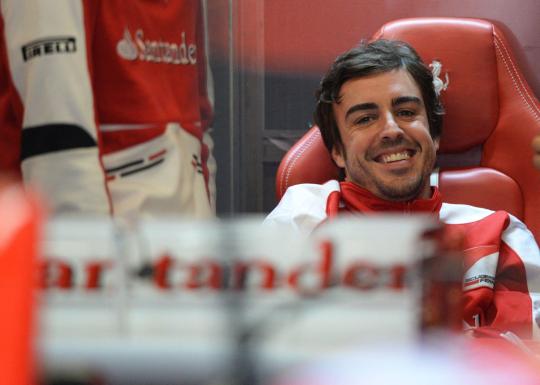

















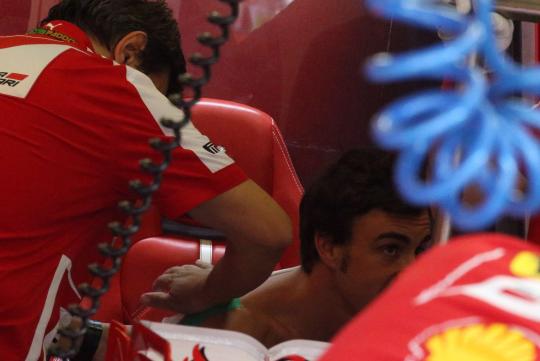






#100% normal not derangement post what are you talking about!!!#you guys: 'wow she really likes this chair huh....'#itll all come full circle i swear to you#but also just like this is a comp post i really feel passionate abt CAUSE HE LOOKS SO GOOD OKAY#like....theres 30 pics...i cant even BEGIN to comment#so just let me know your fav yknowwwwwwww#or just join me in appreciating these fine photos#i want to be the ferrari photographer who was just lurking in the garage waiting for nando to sit down#anyways 5th one down on the leftmost side...i hope you know what my thoughts about that one are....#these pics have incredible range: brooding...puppy cute...super villian sexy mastermind...#bro is COZYYYY#also these are just from getty. im sure theres more but i wasnt ready to get into alladat. it was a lot already#fernando alonso#f1#formula one#formula 1#we do a little bit of f1#fa14
235 notes
·
View notes
Text

MY DOCUMENT HAS BEEN LIKE THIS FOR OVER THIRTY MINUTES AND IM TOO NERVOUS TO TRY AND RELOAD THE PAGE AND LOSE WRITING AAAA
#knox rambles#im sure itll be fine i just thought the doodle was funny#i am being gatekept from writing fr
98 notes
·
View notes
Note
Bamsara vs the tax system: tragedy strikes again
I would love to pay my taxes if only they actually let me know if/what i owe instead of having to do olympic mental mathematics and then getting penalized if I get it wrong :( no shame on my tax lady either, she's much older and doesn't know how online stuff works like that so we're both Going Thru It
349 notes
·
View notes
Text
saiki being an oblivious harem protagonist is the funniest concept ever to me... its so fitting with the normal tdlosk shenanigans too...
like imagine, maybe hes wearing his ring, is out of town, or doesnt have his powers in the exact moments someone realizes theyre in love with him.. so he doesnt have the benefit of immediately hearing the words "im in love with saiki" so he'll have to figure it out with context clues and yk. emotional intelligence.
WHICH HE SUCKS AT AND DOESNT HAVE.
notice how the only people we know had a crush on him in the show are people who very explicitly thought "i have such a huge crush on saiki.." "i think im falling in love with saiki!" "saiki youre my soulmate, kiss me!" but anyone else could have and he just didnt know... what about people who are more subtle with their feelings, people who havent even realized their own feelings yet, or even people who are actually pretty obvious but saiki just doesnt get it !
(also i wrote this out a while ago and then read this volume a bit later and im adding this cuz it reminded me of it lol)

#not to mention its also in character for him to be like 'well they prob dont ACTUALLY have a crush one me- they just think they do'#cuz that happens sometimes#i left this in the drafts for so long cuz i was like. this phrasing sucks how do i say this better.#but i cant fix it im just dumb and thats fine im sure itll come across somehow someway#whatEVER#saiki k#tdlosk#the disastrous life of saiki k.#saiki kusuo#meows post#torisai#saikechi#kubosai#saikai#um idk what else but those fit with this a lot#torisai and saikechi one sided crushes go so fucking hard
80 notes
·
View notes
Text

they might lock up my husband, im not okay</3
#obey me spoilers#im sure itll be fine but still ): lol#obey me screenshot#obey me diavolo#obey me christmas#om diavolo#om! diavolo#omnb#obey me nightbringer#omswd diavolo#omswd#lord diavolo
89 notes
·
View notes
Text
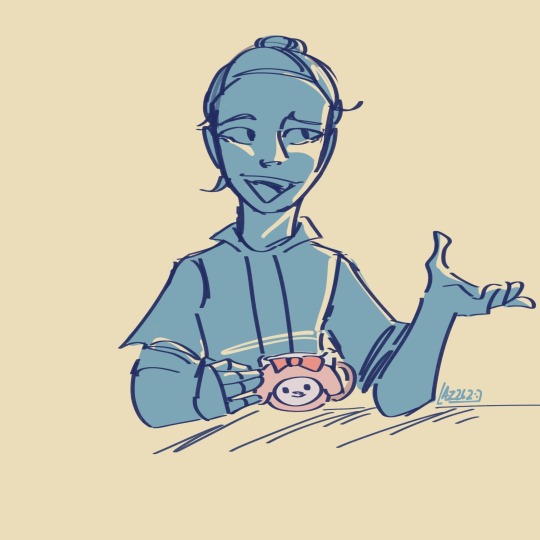

havin a nice chat
inspired by this post on twt

#mk1 kung lao#mk1 raiden#kung lao fanart#raiden fanart#railao#mk1 fanart#mortal kombat fanart#been a fat minute but im back#also for some reason my fingers were swollen and have started getting pins and needles#so thats worrying#but im sure itll be fine#just laz things
45 notes
·
View notes
Photo

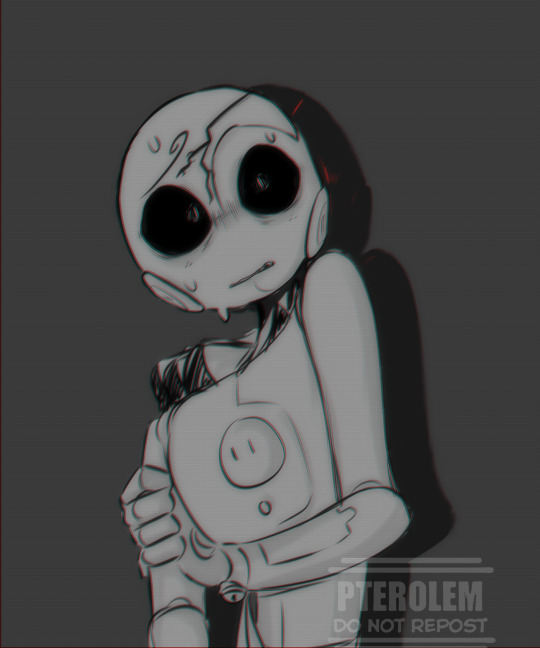
who thought it was a good idea for robots to dream anyway?
reblogs are appreciated ^^
#fnaf#fnaf sb#fnaf sun#fnaf moon#fnaf sundrop#fnaf moondrop#fnaf daycare attendant#fnaf ruin au#security breach ruin#security breach dlc#ruined moon#fnaf security breach#my art#doodles#eyestrain cw#mildly this is vent art from last night but! im okay now#just went 'sure slap it into the ruin au itll be fine youll make it fit'
935 notes
·
View notes
Text
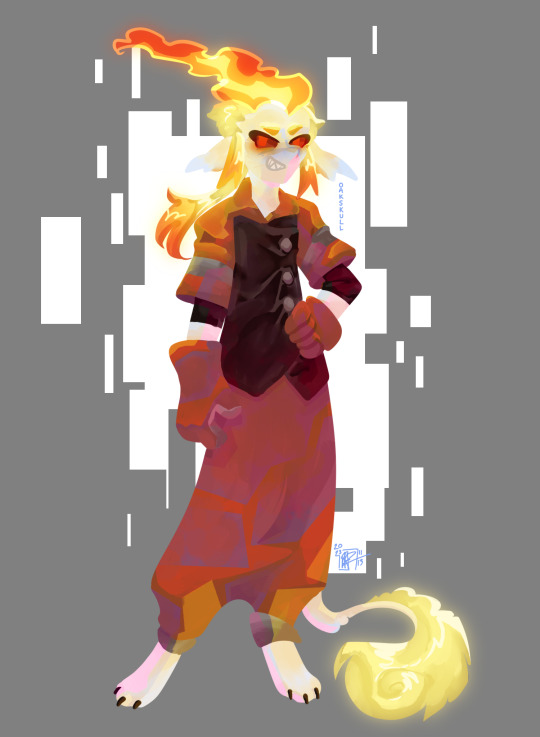
Tumblrrrr killing my image qualityyyy
Anyways its the lad :)
#oakskull art#mcyt#tangotek#tango tek#He's got blue blushies bc fire. yknow#ive desided that him ass either blushing orange (moving parts anyone?) or blue no more red#we'll see how this works out in water color im sure itll be fine#Its kinda funny how i am so much more inclined to draw tango when im doing digital and timmy when im doing traditional#im also drawing jim in this style ill post it when i finish it like next week or something#or he'll be a WIP forever
54 notes
·
View notes
Text
happie wednesday dear friends in m phone ♡ wishing u a day that is as lovelie as you are 💝⭐️ remember there is no one else quite as special in the way u are ,, n every day u are here with ur precious ones + me + fos is a gift ꒰ 𓏼 ˊ͈ ᵕ ˋ͈ 𓏼 ᥩ ྀི꒱



#𓈒 ۫ 𝓹𝓾𝓹𝓹𝓲𝓮 𐂯 𝓹𝓻𝓪𝓽𝓽𝓵𝓮𝓼 ₊⠀ೀ#aah i feel like ive been such a bad mutie lately ): not interacting n sending a lot of asks n whatnot . .#im sure itll be fine once i adjust to my busy schedule ^ O ^ but for now please dont think i am ignoring u or dont care abt u 🥺#i vrie much Do but i am jus . . . Busy . T T#ure all vrie dear to me so i hope u cn still feel me cheering u on even if im not here ♡
29 notes
·
View notes
Text
making my first chocolate banana bread from scratch pray for me guys pLEASE
#im sure itll be fine but im like#i dunno#im trying to get into baking and im the only one in the house that seems to be like#about the baked goods#I have a greater understanding of the trope of bringing neighbors a pie now i think#i want to baaaake... melon pan next...
33 notes
·
View notes
Text
Live Emotion Tap Spaces
A too long post on the Live Emotion preview clip only having two touch icons:
I've seen mixed reponses. Some people are happy to see a more accesible layout that is less likely to cause hand and wrist damage from long/frequent play sessions, and some are dissapointed and fearful that it might be too slow or too basic.
I'd take an educated guess that what we're seeing in this clip is an 'easy' difficulty, with higher levels hopefully having at least a faster speed. When comparing this clip to the easy difficulty of Shining Romance on SL, both are nearly identical with 11-12 taps within 8-9 seconds.
It's hard to say how I feel about it so far without seeing more footage. Personally, I think at least 4 would be ideal but I can't say until more footage is revealed. It's certainly possible there are more tap spaces in higher difficulties, or the higher speed and potentially more gesture options would make up for it.
Here are some other rhythm games with similar amounts of touch spaces. I've tried to link higher diffulty levels to show the potential:
Love Live All Stars - Very similar layout to Live Emotion with two tap icons, however there are also some notes that have to be swiped in the direction indicated which I think could be implemented in higher difficulties in LE. Also has a mode with less distracting bg visuals (that is customisable with unlockable backgrounds) which I am also currently hoping to be a toggle in LE.
Aikatsu - This I believe is a two player mode that is being played solo, but it does show another example of a 2 touch icon UI. I think it's also played with a controller, but its easy to imagine the arrows as directional sliding gestures as well. Aikatsu has a slightly younger demographic, so it makes sense if the beatmaps skew a bit simpler.
Idolish 7 and I-Chu - Both with four tap icons.
Then of course you have games like Bpro and SIF that have a similar high amount of tap icons to Shining Live. There are also some with similar functionality but different look, like Show By Rock, D4DJ, Project Sekai, and Hypmic.
And for more varied rhythm gameplay styles, but to highlight the potential of different gesture types, you have:
King of Prism - Tapping and making certain swipe gestures as they skate through hoops. This and some others linked also have segments where you trace shapes on the screen at certain parts of a song, or whena gauge fills up.
Te to Te Connect - Arcade game with beatmaps that encourage copying the movements on screen. These sort of swiping and tracing shape movements are especially interesting to me but I dont know if we'd see something like that in LE.
Muse Dash - A different style of rhythm game to what we've seen so far from LE, but there may be something in there to inspire you.
Fit Boxing - Again very different and doesnt really translate to touch screen, but while holding a joycon the player does different types of punches and movements corresponding to the icons.
Osu - A classic, with its icons taking up the screen in various patterns rather than staying in set positions, this is also something I dont expect to see in LE, but is a fun gameplay style. Osu also has a large spinning wheel that shows up occasionally for a short period of time, and has to be spun in circles very quickly.
All that to say, who knows what we're in for. I would prefer a few more touch icons, but even if harder difficulties still only have 2 I think its possible to get a fun and difficult game out of it if theyre fast enough, and have various tap gestures to keep it intersting and engaging (tap, hold, spin, multi-tap, swipe up/down/left/right etc).
Lets wait and see what the next game reveals showcase.
#utapri#live emotion#uta no prince-sama#not shining live#have you missed by very long analysis of a 9 second clip?#i havent played any of these other games so could be wrong but i think theyre interesting to look at as examples#im a bit fearful but im sure itll be fine#we have more game introductions coming so we can judge what we see in those and once we can play the final game#video#long post#sorry for no read more break#game introduction
14 notes
·
View notes
Text
Introduction to Collective Seraphic
Now that Seraphic's at a stable place, I think I'm gonna take some time to delve into the basics of how it operates. For this post I'll only be going into the language itself and not the writing system, as that's going to need a post of its own to elaborate on. I'll try to keep this as concise as possible, but I may make separate posts expanding on topics discussed in this one. So, without further ado, onto the infodump!
Background
Collective Seraphic (which I'll be referring to as "Seraphic") is an artlang that I've created for a comic that as of this post I have not began yet, but am still developing. The majority of the comic will take place on the Seraph Homeworld, an alien planet some 3,000 lightyears from Earth populated by the seraph species (pictured below):

Within the story, Seraphic acts as the lingua franca of the Seraph Homeworld and the many colonized planets under Seraph control. It's used in the government, and among speakers of differing languages. As such, this language was the first one that I knew I would need to make as it will play a vital role in both the storytelling and narrative structure.
Syntax
Seraphic is largely a fusional language, employing affixes to modify the semantic role and meaning of morphemes. Seraphic does not, in the traditional sense, have verbs, so the sentence structure is strictly subject-object (will expand upon later). Nouns decline for number and tense, and are grouped into seven noun classes. Adjectives agree with nouns in number, except if derived from nouns themselves, in which case they'll also agree in class. Seraphic is very head-initial; with demonstratives, numerals, possesives, adjectives, genitives, and relative clauses following the noun the modify; and prepositions preceeding the nouns they modify. Auxiliaries preceed procedurals (again, will expand upon later).
Phonology
Here is the phonological chart for Seraphic:
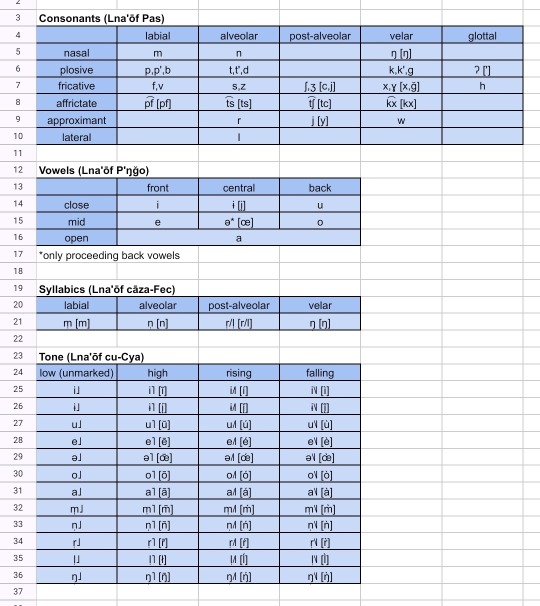
It has a syllable structure of (CC)V(CC). Plosives cannot exist word finally, clusters of consonants of the same manner are illegal, and vowel clusters are also not permitted. Syllabic consonants are grouped with vowels and behave much like them, carrying tone and stress, so they together are grouped and referred to as vocalics. Seraphic is a tonal language, employing the use of four tones: rising (á), falling (à), high (ā), and low (a). Low tones remained unmarked in both the Seraphic script and in romanization. Stress is syllable-independant. It will take either the ultimate, penultimate, or rarely the antepenultimate. Stress always falls on the syllable with a voiceless initial obstruent nearest to the end of the word. If none are available, it will fall on the syllable with an initial sonorant within the same parameters. Stress will never fall on a voiced obstruent. For clarity, I'll provide a key describing the pronunciation of the romanization.
Sounds that are similarly pronounced as they're read in American English:
m, n, p, b, t, d, k, g, f, v, s, z, y, w, l
Sounds that have special pronunciations:
ŋ, like the ng in English "sing"
p', like the ጴ in Amharic "ጴጥሮስ"
t', like the t' in Navajo "yá'át'ééh"
k', like the კ in Georgian "კაბა"
', like the the space within English "uh-oh"
c, like the sh in English "sharp"
j, like the s in English "measure"
x, like the gh in English "ugh"
ğ, like the γ in Greek "γάλα"
pf, like the pf in German "Pfirsiche"
ts, like the z in Italian "grazia"
tc, like the ch in English "chain"
kx, like the kh in Lakota "lakhóta"
r, like the rr in Spanish "perro", although occasionally like the r in Spanish "amarillo"
i, like the ee in English "meet"
į, like the ы in Russian "ты"
u, like the oo in English "boot"
e, like the é in French "beauté"
œ, like the a in English "Tina"
o, like the o in Classical Latin "sol"
a, like the a in English "bra" although this can change to be more forward or more backward.
Another letter that might trip people up is ł, which is meant to represent the high tone syllabic 'l'. Otherwise, syllabics are written the same as their pulmonic counterparts, with tone markers written when applicable.
Nouns
Nouns make up the bulk of the Seraphic lexicon. Every noun is grouped into one of seven classes:
Solar class: nouns related to seraphim or seraph-like beings, and seraph body parts. Prefix appears as zā-, zō-, zē-, s-, or ts-.
sēr = "person"
Astral class: nouns related to non-seraph animate lifeforms (their equivalent to "animals"). Prefix appears as ğr-, x, or kx-.
xuc = "cherub"
Vital class: nouns related to inanimate lifeforms (their equivalent to "plants"). Prefix appears as wā-, wō, w-, ū-, wē-, or wī-.
wējlux = "tree"
Terranean class: nouns related to landscapes, locations, and natural phenomena. Prefix appears as va-, vo-, vu-, f-, and pf-.
voxāl = "sun"
Metallic class: nouns related to inanimate objects, both natural and artificial. Prefix appears as ja-, jo-, c-, or tc-.
jağrú = "rock"
Lunar class: nouns related to abstract concepts, and terms related to time. Prefix appears as la-, lo-, le-, li-, y-, or l/ł-.
levren = "job"
Oceanic class: nouns related to general words, tangible concepts, numbers, all adjectives, and non-incorporated loanwords. Prefix appears as a/ā-, o/ō-, or aw-.
awuf = "group"
Adjectives do not agree in class, due to the fact that nouns originally are derived from adjectives, and noun classes acted as a way to differentiate between nouns and adjectives.
fa = "warm, hot"
jafa = "fire" (lit. "a hot thing")
When adjectives are used as predicatives, they decline into the oceanic class in order to take the procedurals (once more, will expand upon later).
Nouns also decline for four numbers: singular (one thing, usually unmarked), dual (two things, both things; suffixes as -ac, -oc, -œc, or -c), plural (things, many thing; suffixes as -n, -an, or -in), and collective (every thing, all things; suffixes as -āf/ōf, -áf/-óf, or -'ōf).
Seraphic doesn't use pronouns. Everything and everyone is referred to by name, including yourself. From our perspective, the Seraphic language constantly speaks in the third person. However, it can be repetitive to use the same name over and over again in a sentence, and sometimes you don't know the name of things, so they'll apply what I've called pro-forms. They consist of the demonstrative adjectives fl "this", sl "that", and xl "yon" declined into the Solar class and taking the place of the first, second, and third person respectively. For ease of reference, I'll provide the forms and their declensions below.
zāfl (I/me), zāflc (both of us), zāvlin (we/us), zāfláf (all of us)
zāsl (you), zāslc (both of you), zāzlin (you guys), zāsláf (all of you)
zōxl (they), zōxlc (both of them), zōğlin (many of them), zōxláf (all of them)
Seraphic makes no distinction in the gender of the speaker, in this regard. Although these resemble pronouns, they're not meant to be used as often as regular pronouns, and whenever possible it's much preferred that you refer to someone or something by name.
Adjectives and Prepositions
Adjectives are fairly straightforward. Adjectives follow the noun they modify (e.g. sēr tan "big person"), and agree with them in number (e.g. sēr tan "big person" vs sērn t'aŋon "big people"). Adjectives agree in the singular form with singular and collective nouns, and they agree in the plural form with dual and plural nouns.
There are three main types of adjectives: native adjectives (e.g. cna "good"), borrowed adjectives (e.g. anzn "nice"), and noun-derived adjectives (e.g. arfi/ofi "new"). Native and borrowed adjectives don't agree with noun classes, but noun-derived adjectives do. It originated from the animacy-based adjective agreement system in Proto-Seraphic, which has been lost in all other adjective instances. When you want to make a noun into an adjective you'll affix one of two prefixes to it: ar- (if agreeing with Solar, Astral, and Vital nouns) and o- (if agreeing with Terranean, Metallic, Lunar, and Oceanic nouns). There are specific rules on the forms each prefix takes based on the noun they're attached to:
"ār-" when preceeding high or falling vocalic syllables (e.g. sēr ārzājna "popular person")
"ar-" when preceeding low or rising vocalic syllables (e.g. wēn arfe "local fruit")
"ó-" when preceeding high or falling vocalic syllables (e.g. lalel ówē "grassy flavor")
"o-" when preceeding low or falling vocalic syllables (e.g. lesar olvulvren "economic problem")
"ōw-" when preceeding words that start with a vocalic (e.g. lnin ōwāsāvbas "momentary event")
Prepositions occur before the nouns they modify, and don't change form in any circumstance. There are currently 19 prepositions in the modern language, and they are usually connected to nouns via a hyphen (e.g. e-fe "at (the) place"):
cu = of; indicates possession
pr̄ = indicates the indirect object, equivalent to "to" in the phrase "The man sends the letter to me."
in/īn = as or like; indicates similarity or resemblance. Will either be low or high tone depending on the tone of the following syllable.
e/ē = at or on; indicates location.
tsa = near or for; indicates relative distance from a location or an action performed for the sake of the referent.
cni = without; indicates a lack of possession or company.
wa = in or inside of; indicates interior position.
tn = on top of, above, or before; indicates superior position or a prior instance in time.
pux = under, beneath, or after; indicates inferior position or a following instance in time.
pi = with, together with; indicates being in company of or making use of the referent.
fān = from or away from; indicates the motion of leaving the referent.
ku = out of; indicates motion from within the referent towards the exterior.
tun = into or through; indicates motion from outside the referent towards the interior.
xel = to or towards; indicates the motion of approaching the referent.
kxun = across; indicates motion from one location to another
pn̄ = around; indicates location surrounding the referrent.
cāza = between; indicates location in the middle of the referrent.
tē = after, behind; indicates posterior position.
fr = during; indicates a moment in time
Prepositions aren't combined in Collective Seraphic, but may be in certain instances in colloquial speech.
Procedurals
Okay, this is probably the most complicated part of Seraphic, so I'm going to need to get into things individually. First, I'll start with defining a procedural itself. Procedurals are the term I use for the prefixes used to describe the relationship or process of and between the agent noun and the patient noun. These are what act as the equivalent to "verbs" in earth languages. There are three in use:
Existential: used to denote a state of being or equivalence between agent and patient, or to the patient and itself. Equivalent to English "to be" (e.g. A is B, there is B). Usually prefixes as some variant of n-, m-, or ŋ-.
Actional: used to denote an action or process between the agent and patient, or with the patient and itself. Equivalent to English "to do" or "to act upon" (e.g. A acts upon B). Carries a connotation of agency and intent. Usually prefixes as some variant of re-, ra-, or r-.
Resultative: used to denote an occurence or change in state between agent and patient, or patient and itself. Equivalent to English "to become", "to happen", or "to change into" (e.g. A becomes B, B happens to A). Carries a connotation of passiveness or motion. Usually prefixes as some varient of ed- or ez-.
The procedural will change its form slightly depending on the class and declension pattern of the noun it modifies. It always affixes to the patient noun, demonstrating a relationship of an action and what is being acted upon. In this way, the patient can be clearly identified. In transitive or causative clauses, the word order is always S(P)O, with the agent acting as the subject and the patient as the object. In intransitive and passive clauses, the word order is always (P)S, with the patient acting as the subject and the agent demoted to the indirect object or omitted entirely.
Although seemingly limiting, using these three procedural, as well as prepositions, nouns, and adjectives, altogether can be used to make all sorts of verb equivalents that are called "procedural phrases". I'll demonstrate how to build a sentence now. First thing we need to know is the subject and object:
Sāx ... jafa (The child ... the fire)
Next, I'll add the actional procedural in the present tense to this.
Sāx rejafa (The child acts upon the fire)
By itself this is technically grammatically correct, but it doesn't really mean anything. It's too broad. So we add a prepositional phrase to specify exactly what action the child is taking towards the fire.
Sāx pi-sīman rejafa (The childs acts upon the fire with (their) eyes)
Now we know that the child is performing an action involving the use of their eyes. Now of course this could mean many different things in English, but in Seraphic the first thing that comes to mind would be fairly obvious: to see! Thus, "Sāx pi-sīman rejafa" would be the same as saying "The child sees the fire" in English! There are a lot of set phrases that equate to verbs, and remain consistent in their arrangement. Often differing phrases are a useful way to ascertain where someone is from or what their first language is.
Tense and Aspect
Seraphic has six main tenses: two pasts, two presents, and two futures. The two pasts consist of the recent past (happening recently) and the remote past (happening a long time ago), and they prefix and/or combine with the procedural.
Sāx pi-sīman ğrejafa (The child just saw the fire)
Sāx pi-sīman eğrejafa (The child saw the fire a while ago)
Similarly, the future tenses consist of the near future (will happen soon) and the distant future (will happen eventually).
Sāx pi-sīman drejafa (The child will soon see the fire)
Sāx pi-sīman izrejafa (The child will eventually see the fire)
The present tenses consist of a general present tense (happens) and the infinitive (to happen) which is used with auxiliaries and copulae and carries no presence in time.
Sāx pi-sīman rejafa (The child sees the fire)
Pi-sīman ezrejafa (To see a fire)
Whether someone considers an event to be nearer or farther in time from them is completely up to their discretion. There's no set timeframe for when to use the recent vs. remote past, it's all fairly subjective. However, whether you decide to use the recent or remote can really indicate whether you believe something to be in the distant past or future, or just a few moments ago or soon.
Seraphic also makes use of two copulae, the perfective -r and the imperfective -l, helping clitics that expand on the aspect of the procedural, i.e. how the procedural happens over time instead of when in time. The copulae are separate from the procedural, being placed directly before it and conjugating on their own similarly to the lexical procedural. When the copulae are in use, they are conjugated instead of the lexical procedural, while the lexical will be put into the infinitive. The exception to this is if the point in time is considered necessary to be stated for the sake of clarity or emphasis, in which case the lexical verb will also conjugate (though this isn't considered to be the default). The two copulae each conjugate to six tenses, and give 12 individual aspects in total. They are as follows, starting with the perfective:
āgxōnr - Pluperfect: indicates that the action happened at a point before some time in the past either specified or implied (e.g. āgxōnr nidsl "that has happened")
xōnr - Preterite: indicates that the action happened in the past with no reference to if it was completed recently or remotely. A general past (e.g. xōnr nidsl "that happened")
nar - Relative: indicates relative clauses, i.e. clauses that act to modify a noun similarly to an adjective. Equivalent to "that", "who", or "which" (e.g. lsl nar nidsl "the thing that happens")
ednr - Gnomic: indicates general truths, common knowledge, and aphorisms (e.g. ednr nezłsl "things happen")
t'enr - Future Simple: indicates the action will happen in the future with no regard to how near or far it is from the present (e.g. t'enr nidsl "that will happen")
āt'ēnr - Future Perfect: indicates that the action will happen before a time or event in the future (e.g. āt'ēnr nidsl "that will have happened")
And the imperfective:
ŋ̄xōzl - Discontinuous: indicates that an action was happening in the past, but is no longer happening in the present (e.g. ŋ̄xōzl nidsl "that used to happen")
xōzl - Habitual: indicates that an action is done often or out of habit (e.g. xōzl nidsl "that always happens")
īzl - Progressive: indicates that an action is happening at the very moment of conversation (e.g. īzl nidsl "that is happening")
nizl - Prospective: indicates that an action will be starting to, or is in the process of happening (e.g. nizl nidsl "that is about to happen")
t'ezl - Iterative: indicates that an action happens again, repeatedly, or more than one time based on context (e.g. t'ezl nidsl "that happens again" or "that happens again and again")
nt'ezl - Continuative: indicates that an action happens continuously and without end (e.g. nt'ezl nidsl "that still happens")
With both tense and aspects, this largely expands the capability of Seraphic in referring to time.
Moods
Seraphic makes use of seven modal particles to denote seven moods. They are always placed at the beginning of clauses, and no two modal particles can exist in the same clause. They are grouped into four categories: the declaritive (indicative and negative), the inferential (evidential and interrogative), the deontic (volitive and imperative), and the epistemic (subjunctive and conditional). They add extra clarity in the speakers mood or opinion concerning the clause they modify, and are as follows:
Indicative: base form of a clause. Indicates that the speaker is stating a fact or what exists, and is unmarked (e.g. idsl "that happens")
tu - Negative: indicates that the speaker is stating a fact that is untrue or what doesn't exist. Usually only appears in formal, official texts, as the first syllable of the procedural will chage tone to contrast as well and leaves the particle unneccesary in colloquial speech (e.g. tu īdsl "that doesn't happen")
cuc - Evidential: indicates that the speaker is stating a fact that they believe or understand to be true, regardless of having experienced it or not. (e.g. cuc idsl "apparently that happens") Direct evidentiality is denoted using a different method.
an/ān - Interrogative: indicates that the speaker is confirming whether a statement is or isn't true. Forms questions (e.g. an idsl? "does that happen?")
tcān - Volitive: indicates that the speaker desires for the statement to be true (e.g. tcān idsl "that wants to happen" or "that needs to happen" or "that should happen")
má - Imperative: indicates that the speaker is giving a command or suggestion, to themselves and/or to other referents. Functions additionally as a cohortative and a jussive (e.g. má idsl! "let that happen!")
tir - Subjunctive: indicates that the speaker believes the statement to be possible or likely (e.g. tir idsl "that could/would/might happen")
nun - Conditional: indicates that speaker believes the statement to be possible under specific circumstances or conditions (nun idsl "if/when that happens..."
Miscellaneous
That's about the basics of the Seraphic language outline. I'd like to eventually get into things like comparison, evidentiality, declension forms and the like, but those are all topics that definitely need their own individual posts. Real quick, I want to provide one more additional fact about Seraphic.
Seraphic uses base-16, meaning it groups numbers in sets of 16 instead of sets of 10 like we do. 1-16 would be written 1, 2, 3, 4, 5, 6, 7, 8, 9, A, B, C, D, E, F, 10. 10 would be read as 16, and equally 20 would be 32. They're still counting the same amount of things, they're just dividing it up differently!
Anyways that's about it, I hope to share more about Seraphic soon, and when the comic gets released I hope you'll all be able to read it and pick out the many many lines of Seraphic I've poured into it!
ŋKowīci cu-stux 'ōf tsa-levp'ā cu-zāsláf pi-lizt'n ğōdjasa! (Thank you all so much for reading!)
#conlang#constructed language#artlang#grammar#phonology#syntax#linguistics#seraphic#collective seraphic#info post#hope i didn't make a fool of myself in front of the whole community#accidentally showed the world i dont know shit abt linguistics gotdamn#im sure itll be fine#writing system tutorial forthcoming
19 notes
·
View notes
Text
/tw blood mention nothing scary tho!
ALSO RANDOM BUT IM DONATING BLOOD IN A BIT?? HELP
#to help a friend but !!#im !! scared??#not ehat im scared of needles but i have this thing#where i get dizzy and pass out sometimes#and my brother has the same thing and he has passed out whenever they took his blooth for exams??#and im lowkey scared that ill pass out#the fact that i have to go with a 4 hour no eating period is#worse#but im sure itll be fine#blabbering
11 notes
·
View notes
Text
guys i gave in

its a new bitch
its this thing. Its this fucking thing

#New tadocc oc#SIGHHHHHHHHH#making a blog soon#Just realized i made him look like v1.#........im sure itll be fine#Hes a theatre light lmfao#He used to direct the lights during plays a theatrical performances#Now hes stuck here#Cowabummer <- something he would say
10 notes
·
View notes